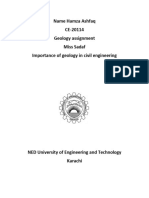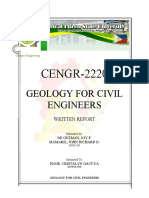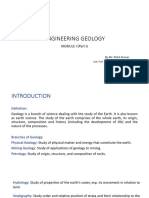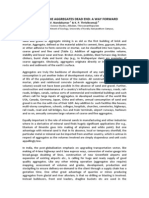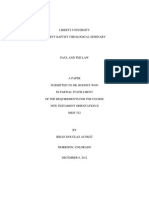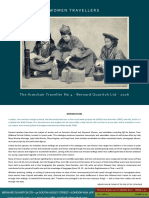0% found this document useful (0 votes)
87 views6 pagesEngineering Geological Maps
This document discusses engineering geological maps and their purpose in providing information to assist with planning, construction, and maintenance of engineering structures. It describes two main types of maps - analytical maps which provide details on individual geological components, and comprehensive maps which depict overall geological environments or zones. The accompanying engineering geological report includes discussions and recommendations regarding areas to avoid, slope stability, anticipated subsurface conditions, excavation considerations, and recommendations for additional studies.
Uploaded by
sujanCopyright
© © All Rights Reserved
We take content rights seriously. If you suspect this is your content, claim it here.
Available Formats
Download as DOCX, PDF, TXT or read online on Scribd
0% found this document useful (0 votes)
87 views6 pagesEngineering Geological Maps
This document discusses engineering geological maps and their purpose in providing information to assist with planning, construction, and maintenance of engineering structures. It describes two main types of maps - analytical maps which provide details on individual geological components, and comprehensive maps which depict overall geological environments or zones. The accompanying engineering geological report includes discussions and recommendations regarding areas to avoid, slope stability, anticipated subsurface conditions, excavation considerations, and recommendations for additional studies.
Uploaded by
sujanCopyright
© © All Rights Reserved
We take content rights seriously. If you suspect this is your content, claim it here.
Available Formats
Download as DOCX, PDF, TXT or read online on Scribd
/ 6













